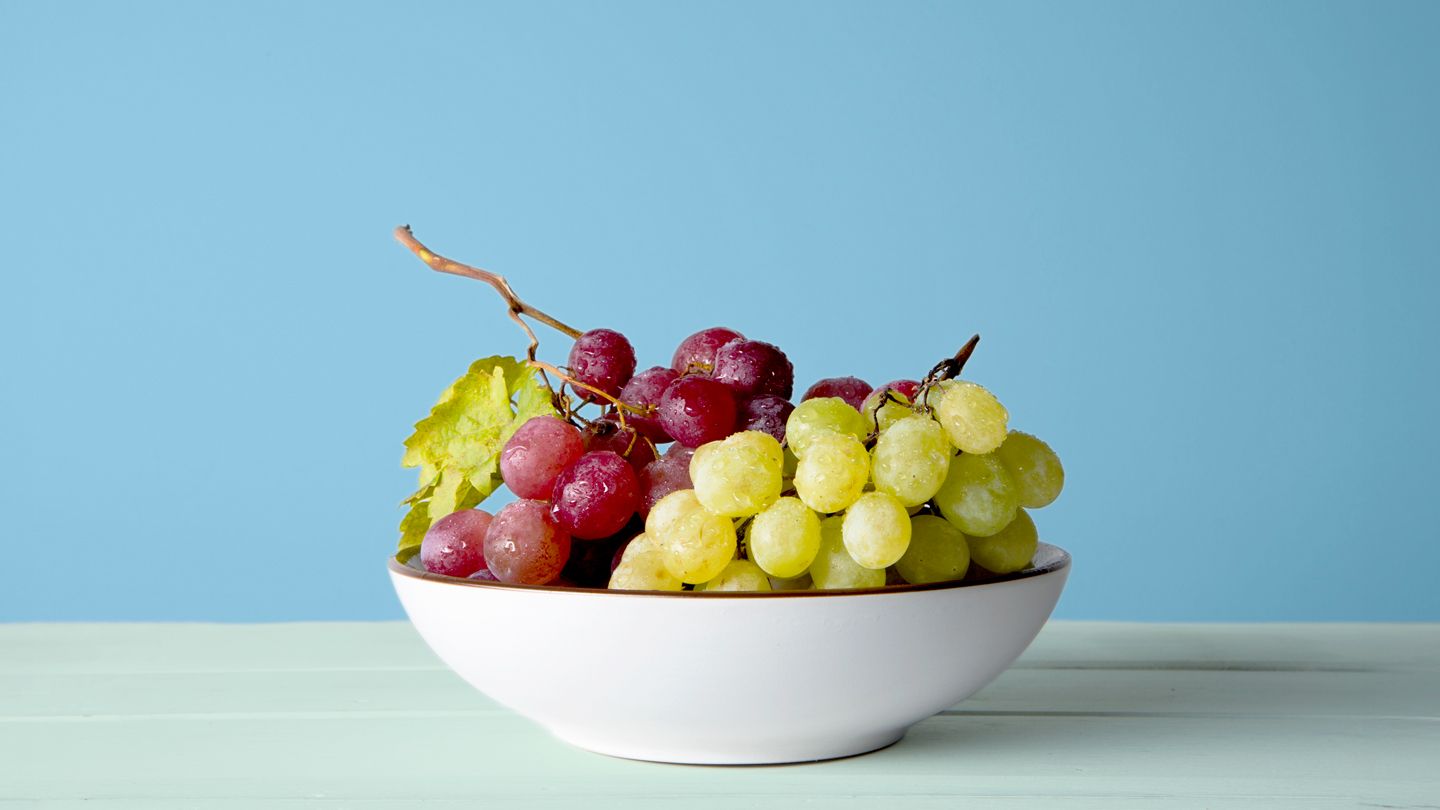Despite its sugar content, fruit can be a healthy part of a diabetes-friendly diet. “Fruit does contain natural sugar, but it also comes packed with fiber, vitamins, minerals, and antioxidants that make it very different from added sugar,” says Amy Kimberlain, RDN, CDCES , the founder of Amy’s Nutrition Kitchen in Miami. But some types of fruit are healthier than others, and will spike your blood sugar without contributing much additional nutritional value. When incorporating fruit into a diabetes diet , Kimberlain recommends being mindful of portion sizes and what you pair with your fruit. Higher-fiber options like whole, fresh fruits contribute to a slower rise in blood sugar, and combining fruit with protein or healthy fat (like nuts) also blunts the blood sugar response.e60dc2a1-f33c-4a05-9b50-8e3e8e597629c75a9cae-8196-4e4b-9ce2-394bec38672e While most fruits can fit into your diet with some careful planning, you’re better off limiting or avoiding certain ones if you have diabetes , says Kimberlain.
Cranberry Juice Drink Fresh cranberries are naturally sour and bitter, which is why many brands add a lot of sugar to cranberry juice products. An 8 ounce (oz) serving of cranberry juice drink can contain as much as 30 grams (g) of sugar.e60dc2a1-f33c-4a05-9b50-8e3e8e597629c36a5f57-4441-4409-9756-d72fbee9984f That means some cranberry juice products contain more sugar than some sodas.e60dc2a1-f33c-4a05-9b50-8e3e8e597629bc4e5b5d-afdf-4cd6-8e12-a7a4b8c02777 Such amounts of added sugar contribute to both rapid blood glucose spikes and insulin resistance.e60dc2a1-f33c-4a05-9b50-8e3e8e597629d61bf087-6e15-40a1-a12d-42d964939779 If you’re looking for juice, Kimberlain recommends sticking with 100 percent fruit juice, which doesn’t contain any added sugar. “Even though it’s natural, juice has little to no fiber, so the sugar [from the fruit] is absorbed quickly,” she says. It’s also easier to consume a lot of juice than to eat whole fruit. Your best option is to have a small glass of 100 percent fruit juice with a meal like breakfast that contains protein and fat (like a vegetable omelet) to slow digestion and better balance your blood sugar. Cranberry Juice Drink
Dried Pineapple If you have diabetes, it’s recommended that you limit your consumption of dried fruit , says Kimberlain. “Because the water is removed, the portion size is much smaller, making it easy to eat the equivalent of several servings of fruit in just a handful and leading to larger blood sugar spikes,” she says. Some dried fruits, such as bananas, cherries, cranberries, mango, and pineapple, may have sugar added to them as well. A quarter cup of dried pineapple, about 1.5 oz, contains 34 g of carbohydrates, 31 g of total sugars (some natural, some added), and about 1 g of fiber.e60dc2a1-f33c-4a05-9b50-8e3e8e59762922134353-3331-4d53-bd97-33680fc61baf Kimberlain recommends pairing a smaller amount of no-sugar-added dried fruit (0.5 oz) with nuts like almonds to add protein, healthy fats, and fiber to a snack that creates a more balanced blood sugar response. Dried Pineapple
Green Smoothies Smoothies can be vehicles for health-promoting ingredients, but they can also be packed with carbohydrates and sugars, including added sugars, says Kimberlain. All smoothies are susceptible to this problem, but it’s more obvious when they contain ingredients like frozen yogurt, chocolate syrup, or sherbet. Green smoothies that contain kale or spinach may sound healthy, but sometimes smoothie makers hide sugary juices or other high-sugar ingredients to balance the taste of the greens. “While a smoothie technically [contains] whole fruit, blending breaks down the fiber, and combined with fruit juice, it can raise blood sugar faster than expected,” says Kimberlain. Smoothies aren’t off the table, but it’s important to analyze their ingredients (some contain fruit juice blends, for example) and take a look at their carbohydrate and sugar (especially added sugar) content to make sure the smoothie you choose aligns with your nutritional needs and goals. Better yet, craft a smoothie at home , so you have total control over the ingredients.e60dc2a1-f33c-4a05-9b50-8e3e8e597629509bee1d-373d-42a4-9b3a-9f5d566e1778 Green Smoothies
Bananas Bananas are far from bad, says Kimberlain, and they can be a healthy part of a diabetes-friendly diet. But bananas, like all fruits, come in a variety of sizes, making portion control for healthy blood sugar balance a challenge. A standard banana is about 8 inches long and contains 29 g of carbohydrates, 2 g of fiber, and 20 g of sugar.e60dc2a1-f33c-4a05-9b50-8e3e8e5976290b5014f2-3009-4b30-bbc6-d92157d2d207 How you like your banana also makes a difference. “A very ripe banana will raise blood sugar more quickly than one that’s slightly green, so ripeness matters,” says Kimberlain.e60dc2a1-f33c-4a05-9b50-8e3e8e5976295d766819-ae71-4f2c-a555-3ad78abfa295 If you have some nut butter with your banana or slice it into low-fat or nonfat Greek yogurt, it’ll make for a better-balanced snack. Bananas
Frozen Acai Bowls Acai is a berry from the Amazon with a flavor reminiscent of tea. In addition to buying acai bowls from juice bars and smoothie shops, you can find packs of frozen, blended acai in the freezer section of many supermarkets to make acai bowls at home. One potential issue: Acai is often blended with added sugar to sweeten up the berry, and that’s before adding toppings like honey and sweetened granola. A packet of acai puree may contain around 100 calories and 4 g of fiber, but it may also have 8 g of added sugar, the equivalent of 2 teaspoons.e60dc2a1-f33c-4a05-9b50-8e3e8e5976295f3c4bb9-0d2f-4ab5-8853-9bf1b0571797 (Brands differ, so check the nutrition facts panel on the product you choose.) The American Heart Association recommends that women and men consume no more than 6 and 9 teaspoons of sugar per day, respectively.e60dc2a1-f33c-4a05-9b50-8e3e8e5976298421fdba-01f2-45b0-891a-87c73139fe49 If you’re going to have acai puree, choose an unsweetened option to avoid added sugar. Frozen Acai Bowls
Grapes Grapes are often demonized because they’re sweeter than other options, says Kimberlain. “In practice, what matters more is portion size, overall balance of the meal, and how your individual blood sugar responds,” she says. Grapes contain 16 g of carbohydrates and 15 g of sugar per cup.e60dc2a1-f33c-4a05-9b50-8e3e8e5976297d8929fd-3f4e-435c-bfc7-b757f07c4181 They’re a lower-fiber choice than other fruit, as 1 cup provides 1 g of fiber, which isn’t much to help slow down digestion and regulate the body’s blood sugar response. It’s also easy to eat a lot of grapes in one sitting, losing track as you munch on them straight out of the bag. Kimberlain recommends consuming a small portion of grapes, measuring out the amount that fits into your eating plan, and enjoying them alongside yogurt or nuts. Grapes
Canned Fruit Cocktail in Syrup Canned fruit is a convenient and affordable way to access fruit when it’s not in season or when fresh options aren’t budget friendly. But people with diabetes need to be careful when consuming canned fruit . “I suggest being cautious with forms of fruit that have added sugar or are processed in ways that spike blood sugar more quickly,” says Kimberlain, which includes canned fruits packed in heavy syrup like canned fruit cocktail. Varieties with fruits like peaches, pineapple, pear, grapes, and cherries, can contain more than 44 g of total sugars per cup.e60dc2a1-f33c-4a05-9b50-8e3e8e5976292353cbe8-0471-446a-a307-6cc46608a49b Draining the liquid from the canned fruit can reduce total sugars to 37 g.e60dc2a1-f33c-4a05-9b50-8e3e8e59762967fae1c7-8291-4a57-98f4-765e36a20459 An even lower sugar option is to look for canned fruit packed in juice and drain the can before eating the fruit pieces.e60dc2a1-f33c-4a05-9b50-8e3e8e597629f8ed5ee0-d8fe-4be9-bd5a-c95267adda79 Canned Fruit Cocktail in Syrup
The Takeaway Fruit can be part of a diabetes-friendly diet, but portion size, ripeness, and the presence of added sugar greatly influence the body’s blood sugar response to such foods. Be suspicious of processed fruit products, such as juices, purees, and canned fruit, as they often contain added sugar or concentrated carbohydrates that spike blood glucose. Even naturally sweet fruits like bananas and grapes can raise blood sugar quickly if portions are too large or if they’re consumed without sources of protein, fat, or fiber. Choose whole, unsweetened fruit in controlled portions and pair them with protein or healthy fat for better blood sugar balance.
Resources We Trust Mayo Clinic: Diabetes Diet: Should I Avoid Sweet Fruits?Harvard Health Publishing: Blood Sugar-Friendly Fruits if You Have DiabetesAmerican Diabetes Association: What Superstar Foods Are Good for Diabetes?Johns Hopkins Patient Guide to Diabetes: How to Fit Fruit Into Your Meal PlanCleveland Clinic: Best Fruits for Diabetes
Read the full article here
Leave a comment




